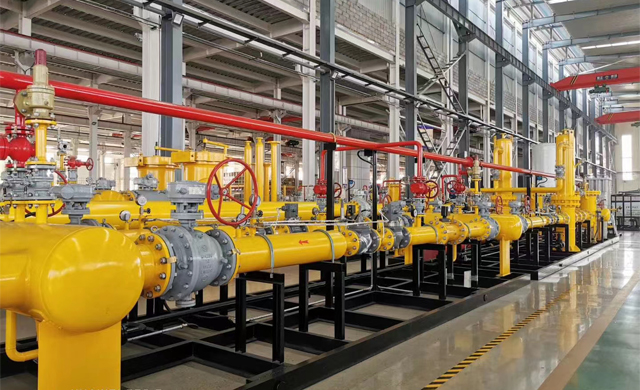
Dec . 05, 2024 16:03
Back to list
Understanding the Functionality and Benefits of Pressure Reducing Valves in Systems
Understanding Pressure Reducers An Essential Component in Fluid Systems
In numerous industrial and residential applications, managing pressure is crucial for safety, efficiency, and functionality. One of the key devices that assist in this endeavor is the pressure reducer, also known as a pressure regulator. This important component plays a vital role in controlling the flow and pressure of fluids, whether gaseous or liquid, ensuring system integrity and optimal performance.
What is a Pressure Reducer?
A pressure reducer is designed to lower the pressure of a fluid to a safer and more manageable level. It typically features an inlet and outlet, as well as a diaphragm or spring mechanism that accommodates changes in flow and pressure. Essentially, when a high-pressure fluid enters the reducer, the device adjusts the flow by balancing the downstream pressure against the preset spring tension, allowing a consistent output pressure regardless of variations in the input pressure.
Applications of Pressure Reducers
Pressure reducers are utilized across a wide spectrum of applications. In the natural gas industry, for example, they are vital for regulating the pressure of gas delivered to homes and businesses. Maintaining appropriate pressure levels not only enhances the performance of gas appliances but also assures safety by preventing overpressure scenarios that could lead to accidents.
In the medical field, pressure reducers are integral to oxygen delivery systems. They ensure that patients receive oxygen at a safe and effective pressure, which is critical for respiratory care. Similarly, in aquaculture, pressure reducers are used to manage water flow and aeration systems, optimizing conditions for fish and other aquatic life.
Additionally, in manufacturing and process industries, these devices play a critical role in pneumatic systems, where compressed air is frequently used to operate tools and machinery. A pressure reducer helps maintain consistent pressure, enhancing operational efficiency and prolonging the lifespan of equipment.
pressure reducer

How Pressure Reducers Work
The operation of a pressure reducer can be broken down into a few key stages. Initially, when a high-pressure fluid enters the reducer, it pushes against a diaphragm or piston. This movement compresses a spring within the regulator, which is set to a predetermined threshold. As the fluid flows through, the pressure is reduced to the desired level and exits through the outlet.
The design of the pressure reducer can vary based on its application. Some pressure reducers are equipped with adjustable settings, allowing users to customize the output pressure to meet specific requirements. Other types may have built-in safety features, such as pressure relief valves, which provide an additional layer of protection against potential overpressure scenarios.
Benefits of Using Pressure Reducers
Integrating pressure reducers into fluid systems offers multiple advantages. First and foremost, they enhance safety by preventing excessive pressure buildup, which is crucial in minimizing the risks of leaks or explosions. Moreover, they promote efficiency by ensuring that systems operate within optimal pressure ranges, reducing energy consumption and wear on equipment.
Furthermore, pressure reducers contribute to improved performance. For instance, in applications involving precise operations, such as in laboratories, maintaining a consistent pressure is essential for achieving accurate results. In hydraulic systems, controlled pressure is vital for effective power transmission and machinery operation.
Conclusion
In summary, pressure reducers are indispensable components in various industrial and residential applications, functioning to regulate and stabilize fluid pressure. Whether in the context of natural gas distribution, medical oxygen delivery, or pneumatic systems, these devices play a crucial role in ensuring safety and performance. As industries continue to innovate, the importance of effective pressure management will only grow, making pressure reducers an essential part of modern fluid systems. Understanding their functionality and applications is key to harnessing their benefits, paving the way for safer and more efficient operations across various fields.
Next:
Latest news
-
Safety Valve Spring-Loaded Design Overpressure ProtectionNewsJul.25,2025
-
Precision Voltage Regulator AC5 Accuracy Grade PerformanceNewsJul.25,2025
-
Natural Gas Pressure Regulating Skid Industrial Pipeline ApplicationsNewsJul.25,2025
-
Natural Gas Filter Stainless Steel Mesh Element DesignNewsJul.25,2025
-
Gas Pressure Regulator Valve Direct-Acting Spring-Loaded DesignNewsJul.25,2025
-
Decompression Equipment Multi-Stage Heat Exchange System DesignNewsJul.25,2025

